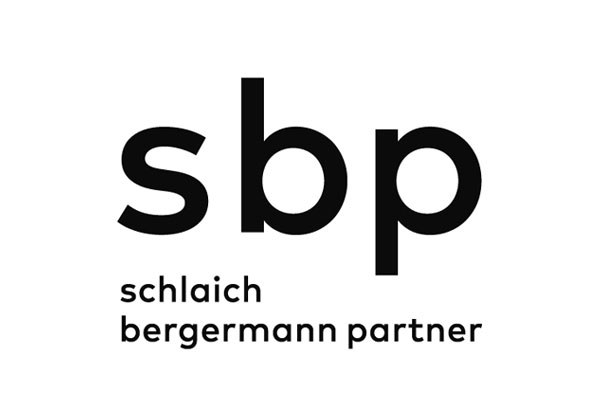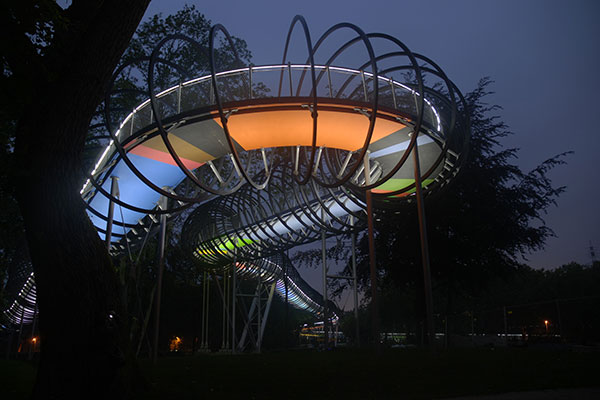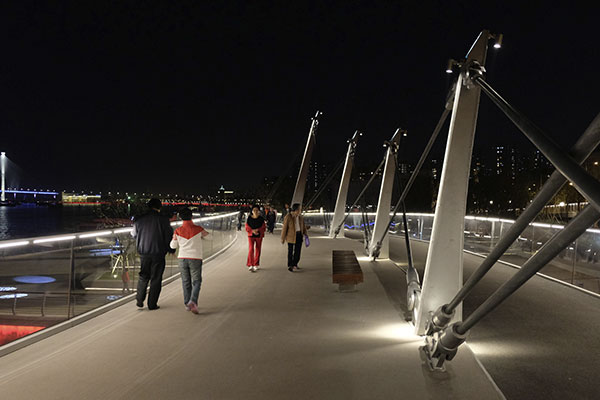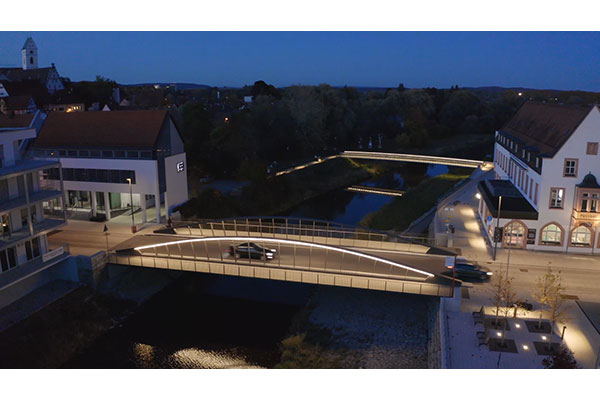

Bridge Sculpture “Slinky springs to fame”, Germany, 2011 (Copyright: sbp/Mathias Nier)

Zhangjiatang Bridge at West Bund, China, 2017 (Copyright: sbp/David Sommer)

A Family of Bridges, Germany, 2019 (Copyright: Andreas Martin)
In our opinion the key to good lighting is not to use technology for the sake of technology, but always ask why and ask what do we want to achieve? Less light, more balanced and targeted. Light that allows our structures to be experienced (at night). The advancements in LED technology have dramatically increased the availability of light. Even to a point that they are being used excessively.
We at schlaich bergermann partner try to think outside the box. Over the past few years, we realized an increasing need to design the appearance of any structure also at night. The line between day and night is being blurred more and more. It is no longer possible to think about engineering structures and their surroundings without also considering their impact during the night-time: Structure and lighting should go hand in hand. That is why lighting has become a vital part in our projects. To do that we address the lightning design at the very beginning of the project.
We have a high level of expertise in structural design. We can integrate the lights into the structure, or we can also adjust the structure itself to implement the lights. All light calculations are executed inhouse. We work both with simple and more complex mock-ups. We can also provide prototypes with the final structures to double check the light effect.
The challenge of each lighting design consists of integrating both the ecological as well as the economic aspects. Furthermore, to understand the effect of light on the surroundings and on people themselves. As we work also internationally, we need to take into consideration that each culture has different desires and needs in regard of light. This needs to be considered in the designs. For us, the key is learning to see light and to reflect on how much it changes a space or a structure. It is the little things that makes the difference: Depth, texture and even poetry.

